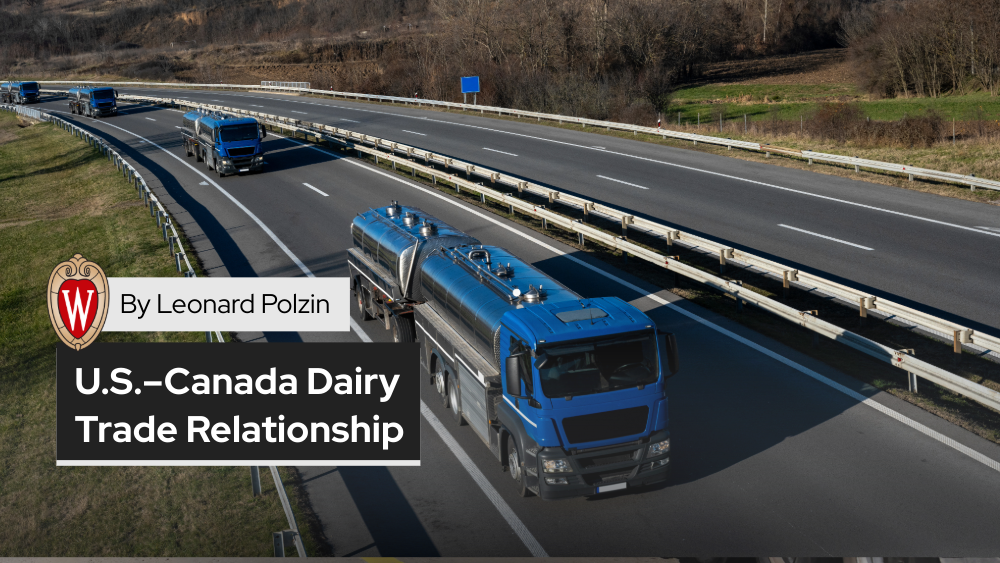
Introduction
This article examines the evolving dynamics of the U.S.–Canada dairy trade relationship in the first quarter of 2025, with a focus on recent policy developments, economic implications, and political considerations. It provides an introductory analysis of trade disputes, market access issues, and the broader geopolitical environment influencing dairy trade between the two nations. This paper is a continuation of a previous discussion by Leonard Polzin on U.S.–Canada trade agreements, expanding on the historical context and examining the latest trade tensions under the Trump administration. By building on prior works, this paper aims to offer an assessment of the current/ongoing challenges and potential resolutions in North American dairy trade policy.
Context: 2023 USMCA Dairy Dispute Outcomes
The current tensions stem from unresolved issues under the Biden administration. The U.S. twice challenged Canada’s dairy quota practices under USMCA. A January 2022 dispute panel ruled that Canada’s allocation of dairy import quotas violated USMCA, prompting adjustments. However, a second U.S. challenge in 2022 led to a 2–1 ruling in Canada’s favor in November 2023, leaving many quota allocations unfulfilled. This history set the stage for the Trump administration’s aggressive enforcement stance in 2025.
Timeline of Key Developments (2025–Present)
- January 20, 2025 – Trump Administration Begins
- Donald Trump is inaugurated for his second term following the 2024 election. On his first day in office, the administration initiates a comprehensive review of the U.S.–Mexico–Canada Agreement (USMCA), including its dairy provisions, with stakeholder input due by April 2025. This signals potential shifts in North American trade policy under the “America First” agenda.
- Late January–February 2025 – Tariff Threats and Emergency Measures
- The Trump administration threatens to impose broad tariffs (25% on most Canadian imports) under emergency economic powers, citing concerns beyond trade, such as border security. On February 1, President Trump invokes the International Emergency Economic Powers Act (IEEPA) to implement tariffs on Canada and Mexico, prompting immediate retaliatory measures from Canada. A temporary truce is reached by late February, delaying a trade war while negotiations continue.
- Early March 2025 – Trade War Escalation
- On March 4, the U.S. enacts 25% tariffs on a broad range of Canadian goods, alongside a 10% tariff on Canadian energy exports. Although certain USMCA-covered products are temporarily exempted, these measures significantly impact cross-border trade.
- March 7–8, 2025 – Dairy Tariff Threat and Canadian Response
- President Trump announces reciprocal tariffs matching Canada’s dairy tariffs (245–298% on over-quota dairy imports) unless Canada reduces its protections. Canadian Trade Minister Mary Ng rejects these claims, calling the proposed tariffs “completely unjustified.” On March 8, Canada unveiled a C$6.5 billion Trade Impact Support package to mitigate the effects of U.S. tariffs.
- Mid-March 2025 – Ongoing Dispute and Negotiations
- Despite a one-month reprieve on some tariffs, tensions persist. By March 12, bipartisan U.S. senators accuse Canada of exploiting USMCA “loopholes” to restrict U.S. dairy market access. The U.S. signals potential broader tariffs by April 2, heightening trade uncertainties.
The summary (table 1) of key developments are given below.
Table 1. USMCA Dairy Dispute and 2025 Trade Developments
| Time | Event Description |
|---|---|
| January 2022 | First USMCA dispute panel rules against Canada’s dairy quota allocation practices. |
| 2022 (2nd Half) | Second U.S. challenge to Canada’s quota allocations initiated. |
| November 2023 | Second dispute panel rules 2–1 in favor of Canada, leaving U.S. complaints unresolved. |
| January 20, 2025 | Trump administration begins second term; USMCA dairy provisions placed under comprehensive review. |
| Late Jan–Feb 2025 | The Trump administration threatens 25% tariffs on Canadian imports; IEEPA invoked on Feb 1; truce by late February. |
| March 4, 2025 | U.S. imposes 25% tariffs on Canadian goods and 10% on energy exports; USMCA products temporarily exempt. |
| March 7, 2025 | The Trump administration threatens matching tariffs on Canadian over-quota dairy tariffs (245–298%). |
| March 8, 2025 | Canada responds with C$6.5 billion Trade Impact Support package; Canadian minister rejects U.S. claims. |
| March 12, 2025 | Bipartisan U.S. senators criticize Canada’s quota practices; U.S. considers broader tariffs by April 2. |
Political Dynamics Influencing Dairy Trade Policy
Domestic U.S. Factors
Trump’s return to power brought a shift toward unilateral trade actions. His administration linked trade measures to non-trade issues, such as border security. Bipartisan support exists for enforcing USMCA dairy commitments, particularly among lawmakers from dairy-producing states. However, concerns arise over potential retaliatory impacts on U.S. exports and inflationary effects.
Canadian Political Factors
Canada’s dairy sector, centered in Quebec and Ontario, remains a powerful political force. The Trudeau government, alongside opposition parties, defended their dairy supply management policies. Concessions on dairy are politically sensitive. The government’s response has framed the dispute as an issue of defending national food security and economic sovereignty.
International & Institutional Factors
USMCA’s dispute settlement system has produced mixed results for the U.S., fostering skepticism within the Trump administration about multilateral arbitration. Canada also faces external pressure, as a 2023 Comprehensive and Progressive Agreement for Trans-Pacific Partnership (CPTPP) panel ruled against its dairy quota administration. The potential for USMCA termination in 2026 adds to trade uncertainties.
Economic Impacts of Recent Dairy Trade Policies
Trade Flows and Market Access
USMCA opened a portion of Canada’s dairy market, leading to increased U.S. exports. However, quota underutilization remains a concern. U.S. dairy exports to Canada surpassed $1 billion in 2022, yet only ~42% of available quota volume was used in 2022/23. U.S. officials argue that Canadian allocation methods obstruct market access.
Prices and Industry Profitability
Canada’s supply management maintains high domestic milk prices through steep over-quota tariffs (~241% on fluid milk, ~298% on butter). If Trump’s proposed reciprocal tariffs were implemented, they would have minimal direct impact, as Canada exports little dairy to the U.S. However, broader tariffs on Canadian goods have economic spillover effects, potentially increasing costs for U.S. consumers and reducing sales for Canadian exporters.
Broader Economic Context
Dairy trade tensions coincide with macroeconomic factors such as inflation and post-pandemic supply chain restructuring. Trade uncertainty impacts financial markets, business investments, and North American trade diversification. The dispute underscores broader economic nationalism trends, affecting investor confidence and regional economic stability.
Industry and Stakeholder Reactions
U.S. Dairy Industry and Officials
U.S. dairy stakeholders support enforcing USMCA commitments but remain divided on Trump’s tariff strategy. The International Dairy Foods Association (IDFA) and National Milk Producers Federation (NMPF) acknowledge trade barriers but caution against prolonged disputes. The U.S. Dairy Export Council (USDEC) highlights potential market losses if trade tensions persist. Meanwhile, bipartisan lawmakers advocate for tougher enforcement against Canadian dairy practices.
Canadian Dairy Sector and Government
The Dairy Farmers of Canada (DFC) strongly opposes additional U.S. access, citing existing market concessions and trade surpluses favoring the U.S. The Canadian government frames the dispute as a defense of domestic agriculture, implementing trade aid packages to support affected sectors. Canadian officials seek to uphold USMCA while resisting U.S. pressure for further market liberalization.
Political Climate Context (2025)
The dispute unfolds amid shifting political landscapes in both nations. In the U.S., Trump’s trade policies reflect a broader protectionist resurgence, with a focus on domestic manufacturing. In Canada, it seems like defending supply management is a political imperative, particularly given the recent shift in leadership. Global trade uncertainties, including weakened WTO dispute mechanisms and evolving regional agreements, further shape the dynamics of U.S.–Canada dairy trade relations.
Conclusion
The U.S.–Canada dairy trade dispute happening in early 2025 builds on unresolved tensions from previous years. While both countries seek to protect their respective dairy sectors, escalating tariffs and political pressures complicate resolution efforts. The outcome of ongoing negotiations will significantly impact North American trade stability and set the tone for the 2026 USMCA review.
References
- Baldwin, T., Marshall, R., & Ernst, J. (2025, March 12). Bipartisan letter to USTR, Commerce, and USDA officials on Canada’s dairy trade practices. Fox Business. Retrieved from https://www.foxbusiness.com/politics/bipartisan-senators-call-action-against-canadas-dairy-trade-practices
- Brookings Institution. (2024). Back to the brink: North American trade in the 2nd Trump administration. Retrieved from https://www.brookings.edu/research/back-to-the-brink-north-american-trade-in-the-2nd-trump-administration/
- Dairy Farmers of Canada. (2025, March 8). Statement from DFC President David Wiens regarding potential tariffs on Canadian dairy. Retrieved from https://dairyfarmersofcanada.ca/en/media/statement-dfc-president-david-wiens-regarding-potential-tariffs-canadian-dairy
- International Dairy Foods Association. (2025). IDFA response to proposed dairy tariffs under USMCA. Retrieved from https://www.idfa.org/news/idfa-statement-on-potential-u-s-tariff-on-canadian-dairy-products
- National Milk Producers Federation (NMPF) & U.S. Dairy Export Council (USDEC). (2025, March 4). Dairy organizations urge intensified negotiations to restore trade flows. Retrieved from https://www.nmpf.org/dairy-organizations-urge-intensified-negotiations-to-restore-trade-flows/
- Office of the United States Trade Representative. (2023, November). USMCA panel rules in favor of Canada in second dairy dispute. Retrieved from https://ustr.gov/about-us/policy-offices/press-office/press-releases/2023/november/usmca-panel-releases-canada-dairy-report-biden-harris-administration-will-continue-seeking-full
- Office of the United States Trade Representative. (2022). U.S. challenges Canada’s dairy TRQ allocation measures under USMCA. Retrieved from https://ustr.gov/about-us/policy-offices/press-office/press-releases/2022
- Trump, D. J. (2025, February 1). Executive memorandum on the use of IEEPA for Canadian and Mexican imports. Office of the President. Retrieved from https://www.whitehouse.gov/presidential-actions/2025/02/imposing-duties-to-address-the-flow-of-illicit-drugs-across-our-national-border/
- U.S. Trade Representative (USTR). (2023, January 31). United States establishes second USMCA dispute panel on Canadian dairy TRQ policies. Retrieved from https://ustr.gov/about-us/policy-offices/press-office/press-releases/2023/january/united-states-establishes-second-usmca-dispute-panel-canadian-dairy-trq-policies


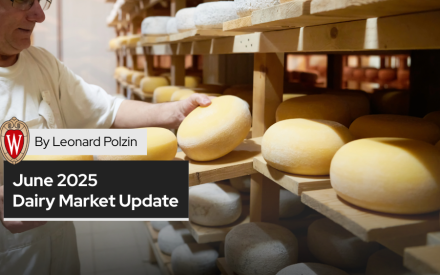 Dairy Market Dynamics and Domestic Constraints: A Dairy Sector Assessment as of June 2025
Dairy Market Dynamics and Domestic Constraints: A Dairy Sector Assessment as of June 2025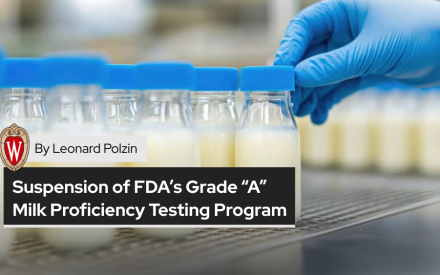 Suspension of FDA’s Grade “A” Milk Proficiency Testing Program – A Comprehensive Analysis
Suspension of FDA’s Grade “A” Milk Proficiency Testing Program – A Comprehensive Analysis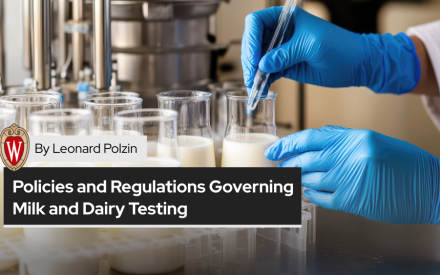 Policies and Regulations Governing Milk and Dairy Testing: A Wisconsin Overview
Policies and Regulations Governing Milk and Dairy Testing: A Wisconsin Overview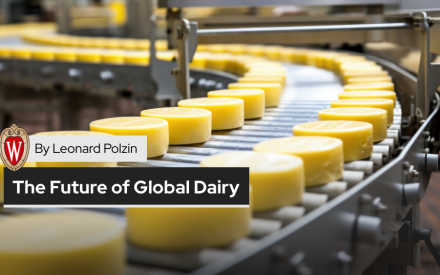 The Future of Global Dairy: Economic Trends, Regional Developments, and Market Vulnerabilities through 2030
The Future of Global Dairy: Economic Trends, Regional Developments, and Market Vulnerabilities through 2030


